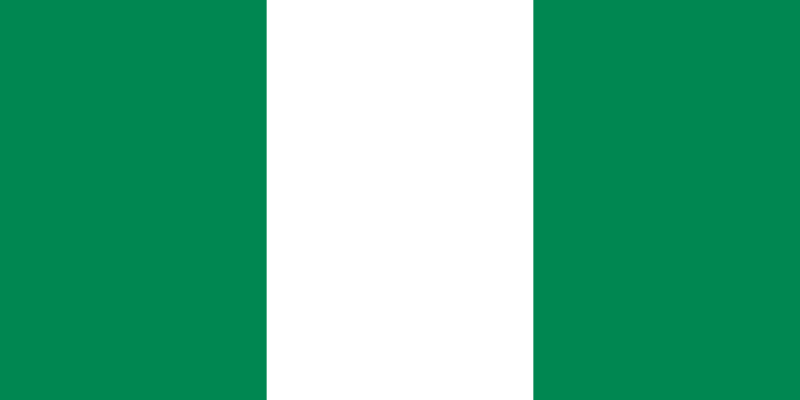Nigeria, situated in West Africa, is the most populous country on the continent and one of its largest economies. It is known for its diverse cultures, languages, and ethnic groups, making it a melting pot of traditions. Nigeria has vibrant cities such as Lagos and Abuja, rich natural reserves, and a strong cultural heritage in music, art, and literature. Its dynamic society, economic potential, and cultural richness make Nigeria a significant and influential African nation.
List of Public and National Holidays for Nigeria in the year 2025
- New Year’s Day is on Wednesday, 1st January 2025.
- Id el Fitri is on Sunday, 30th March 2025.
- Id el Fitri Holiday is on Monday, 31st March 2025.
- Good Friday is on Friday, 18th April 2025.
- Easter Monday is on Monday, 21st April 2025.
- Labour Day is on Thursday, 1st May 2025.
- Id el Kabir is on Friday, 6th June 2025.
- Id el Kabir Holiday is on Saturday, 7th June 2025.
- Democracy Day is on Thursday, 12th June 2025.
- Id el Maulud is on Thursday, 4th September 2025.
- National Day is on Wednesday, 1st October 2025.
- Christmas Day is on Thursday, 25th December 2025.
- Boxing Day is on Friday, 26th December 2025.
List of Public and National Holidays for Nigeria in the year 2024
- New Year’s Day: Monday, 01 January 2024
- Good Friday: Friday, 29 March 2024
- Easter Monday: Monday, 01 April 2024
- Id el Fitri: Wednesday, 10 April 2024
- Id el Fitri Holiday: Thursday, 11 April 2024
- Labour Day: Wednesday, 01 May 2024
- Democracy Day: Wednesday, 12 June 2024
- Holiday: Id el Kabir: Sunday, 16 June 2024
- Id el Kabir Holiday(Ileya 2024): Monday, 17 June 2024
- Id el Maulud: Sunday, 15 September 2024
- National Day Nigeria 2024: Tuesday, 01 October 2024
- Christmas Day: Wednesday, 25 December 2024
- Boxing Day: Thursday, 26 December 2024

Keep in mind that Nigeria’s climate and geographical features can be diverse, and local conditions may vary. These facts provide a general overview of the country’s geographical and climatic characteristics.
10 interessing Geographical facts about Nigeria
- Location: Nigeria is located in West Africa, bordering Benin, Niger, Chad, Cameroon, and the Gulf of Guinea to the south.
- Land Area: Nigeria is the 32nd largest country in the world by land area, covering approximately 923,768 square kilometers.
- Coastline: Nigeria has a coastline along the Gulf of Guinea that stretches more than 500 miles (850 kilometers).
- Topography: The country’s landscape is diverse, including plateaus, lowlands, mountains, and coastal areas. Notable are the Jos Plateau, the Adamawa Plateau, and the Niger Delta.
- Rivers: Nigeria is crossed by several major rivers, including the Niger and Benue, which converge to form a distinctive Y-shaped confluence.
- Natural Resources: Nigeria is rich in natural resources, including petroleum, natural gas, coal, tin, limestone, iron ore, and fertile agricultural land.
- Vegetation: Nigeria’s vegetation ranges from rainforests in the south to savannas in the central and northern regions.
- Biodiversity: The country is known for its rich biodiversity with diverse flora and fauna. It’s home to various species of mammals, birds, reptiles and plants.
- Lakes: Nigeria has several lakes, including Lake Chad, which is shared with neighboring countries.
- Islands: There are several islands off the coast of Nigeria, including Bonny Island, which is known for its importance in the oil and gas industry.
9 Climate facts about Nigeria:
- Climate zones: Due to its vast size, Nigeria has diverse climate zones. It experiences a tropical climate in the south, transitioning to a more arid climate in the north. Nigeria can be broadly divided into four climatic zones: Equatorial, Tropical, Sudan and Sahel.
- Rainy Season: The country has a distinct rainy season and dry season. The rainy season usually lasts from April to October.
- Harmattan: The harmattan is a dry, dusty wind that blows from the Sahara Desert and affects the northern parts of Nigeria from November to March.
- Temperature: Nigeria generally experiences high temperatures, with the hottest months typically occurring between March and May.
- Humidity: The coastal areas, especially in the Niger Delta, can be quite humid, especially during the rainy season.
- Rainfall Variation: Rainfall patterns vary widely across Nigeria. The southern regions receive more rainfall than the arid northern regions.
- Desertification: Northern Nigeria faces challenges related to desertification and land degradation due to factors such as prolonged droughts.
- Rainforest: The southern part of Nigeria, especially in the Niger Delta region, is characterized by lush rainforests.
- Climate Change Challenges: Nigeria, like many other countries, is grappling with the effects of climate change, including more frequent and severe weather events, rising temperatures, and shifts in rainfall patterns.
Keep in mind that Nigeria’s climate and geographical features can be diverse, and local conditions may vary. These facts provide a general overview of the country’s geographical and climatic characteristics.

